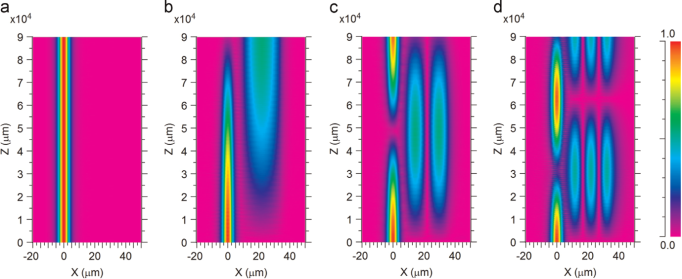Grid-supported fiberglass melting coupler for selective transversal mode coupling

| E-Mail: | sebastian.schlangen@hot.uni-hannover.de |
| Year: | 2016 |
| Date: | 01-02-18 |
| Funding: | DFG |
| Duration: | 03/2016 – 02/2018 |
| Is Finished: | yes |
In order to keep up with the rapidly increasing demand for transmission bandwidth in future, research into new fiber optic technologies, such as Spatial Division Multiplexing (SDM), is currently being undertaken. One form of SDM is based on the use of parallel transmission channels, which are composed of the individual transversal modes of a multimode fiber (Multimode Division Multiplexing) and in an ideal case increase the transmission capacity by the factor of guided modes.
However, the use of individual transversal modes of a multimode fiber requires the efficient coupling of individual transversal modes. This is where a robust, cost effective, and fiber-based coupler is needed, which has a high selectivity of transversal mode, a low transverse mode crosstalk and a low transverse mode-dependent attenuation. Current fiber couplers can only partly meet these requirements. Therefore, the research and demonstration of new concepts of appropriate coupler concepts is of great interest. The concept of the new fiber fusion coupler is based on an evanescence field coupler consisting of an optical single mode fiber with installed optical grid, as well as an optical multi-mode fiber. An essential feature of the new coupler is the selective transversal mode coupling by means of optical lattice.
The asymmetric propagation characteristics of single and multi-modal fibers can be adapted using the grid and thus enable the targeted coupling between any transversal mode of the multi-mode fiber and the basic mode of the single-mode fiber. The main advantage of the new fiber fusion coupler compared to conventional transverse-mode selective coupler structures is that individual transversal modes of any order of the multi-mode fiber can be specifically coupled via the optical lattice with the basic mode of the single-mode fiber with a simultaneously low amount of crosstalk in neighboring transversal modes of the multi-mode fiber.
The fiber fusion couplers being researched should open up new fields of application in different areas. These are in optical communication technology, especially in terms of mode multiplexing and fiber optic MIMO (Multiple Input Multiple Output) systems, or in fiber laser technology, for example to couple transverse-mode selectively in Large Mode Area Fibers (LMAF).
Figure 1: Performance coupling between a single-mode fiber and an individual mode of a multi-mode fiber without optical lattice (a) and with optical lattices of different period lengths (b-d) as a function of the coupler length.




















